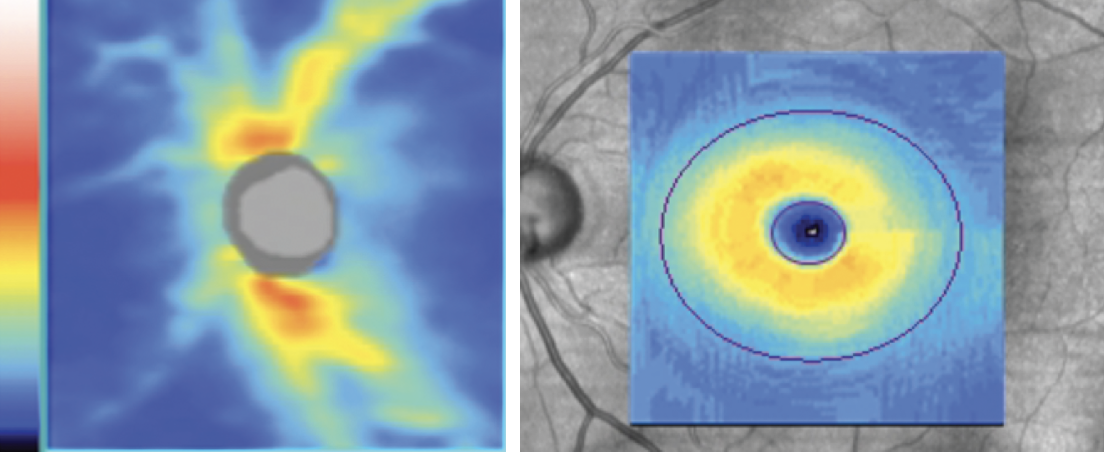 |
|
Researchers created an algorithm that may help diagnose glaucoma purely from retinal thickness-related values. Photo: Andrew Rixon, OD. Click image to enlarge. |
Epidemiological studies have estimated that as much as 50% to 90% of people with glaucoma are unaware that they have it. This statistic is a major cause for concern, considering the condition remains the leading cause of blindness globally. Mass disease screening for glaucoma is not an established recommendation in most regions. However, recent studies out of China and India, two countries that have conducted mass screenings, have noted that the programs were cost-effective—but are they also reliable? Researchers recently conducted a study to investigate whether a risk score assessment can accurately predict which patients have the disease.
Using spectral-domain OCT, the researchers measured retinal thickness–related values in a group of glaucoma patients and compared the results with a group of controls without the disease. They used a multivariable logistic regression analysis to develop the diagnostic models, and four ophthalmologists examined each scan to confirm or deny the presence of glaucomatous findings using these measures: (1) average of retinal nerve fiber layer (RNFL) circular thickness, (2) presence of focal RNFL thinning and difference in height between the double humps in the TSNIT plot, (3) quadrant and clock hour RNFL thickness charts (4) retina ganglion cell layer thickness maps and (5) thickness deviation maps for several variables.
A Humphrey Field Analyzer was also used on some study eyes as an additional method of validation. There were 7,572 patients in total included in the data (aged 35 to 74).
Overall, the risk score seemed to effectively differentiate patients with and without glaucoma. The research team reported that the best-predicting model achieved an area under the curve of 0.97 (sensitivity: 0.93, specificity: 0.91). They also wrote in their paper, “The validation dataset showed a positive predictive value of 90.8% for high-risk scorers, corresponding to 6.2% of the population, and a negative predictive value of 88.2% for low-risk scorers, corresponding to 85.2%. Sensitivity and specificity for glaucoma diagnosis were 0.85 and 0.91 when we set the risk score cut-off at 90 points out of 100.”
The researchers concluded that this OCT-based algorithm to calculate risk scores appears to have strong potential for use in mass glaucoma screening. “The algorithm used in this study can be configured to provide a score by the installation of simple calculation software on existing OCT machines, and therefore seems to be suitable for practical use,” they noted.
Fukai K, Terauchi R, Noro T, et al. Real-time risk score for glaucoma mass screening by spectral domain optical coherence tomography: development and validation. Transl Vis Sci Technol. August 8, 2022. [Epub ahead of print]. |


